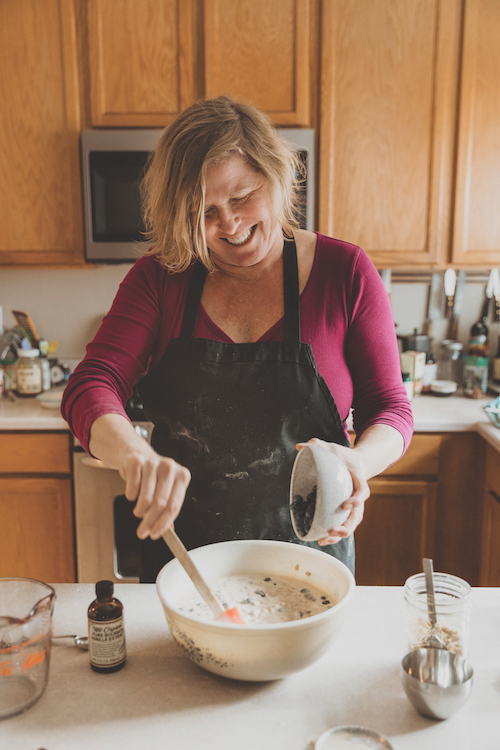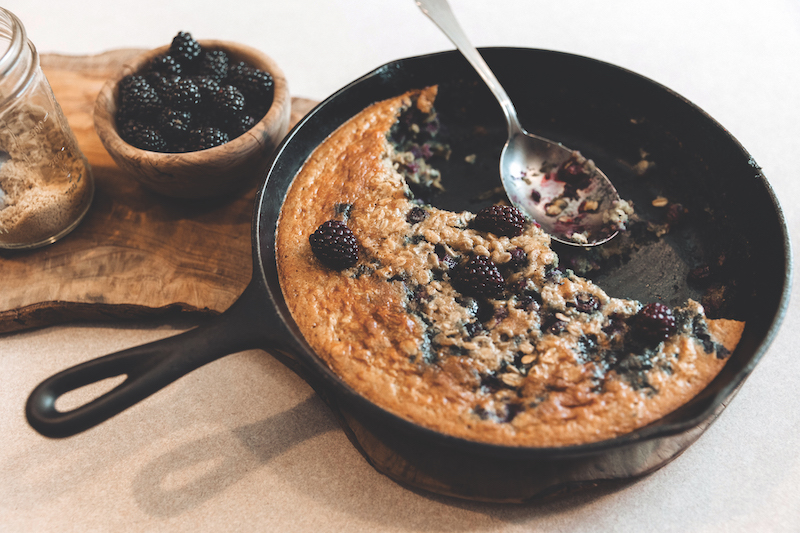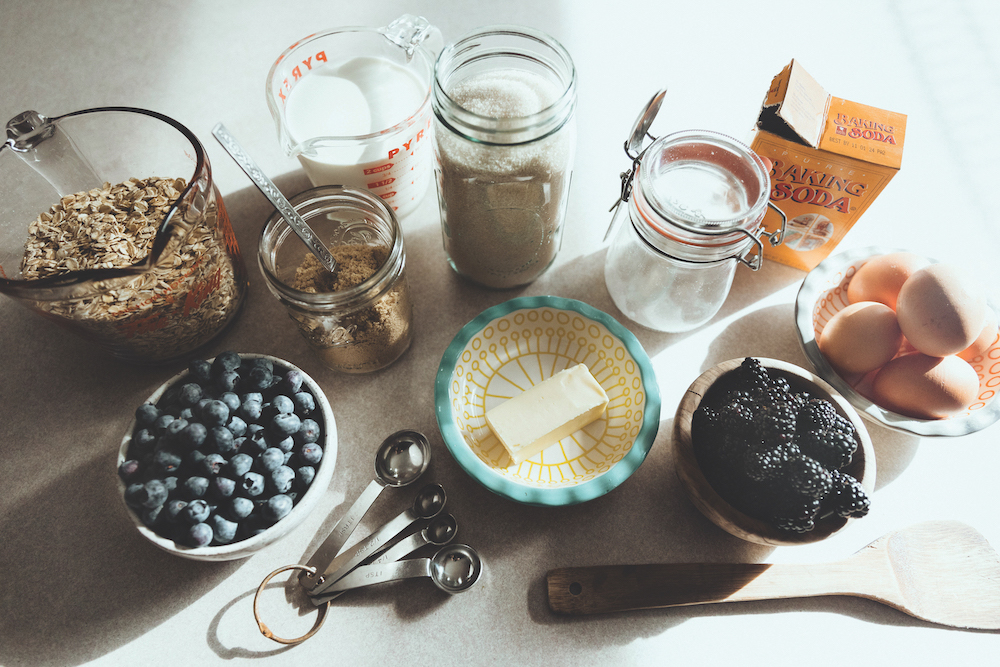Confessions of a Germophile: Sheila Shupe Makes Overnight Baked Oatmeal
Photos by Tammy Horton
I’ll admit it. I don’t like porridge. For the granddaughter of a Scottish immigrant, it’s hard for me to even type those words. Like many of us, I grew up in the shadow of the food pyramid. It ain’t easy cramming 12 daily servings of subsidized cereal grains into such a young body, but my parents did their best. Thank god for mush, they must’ve thought–it’s cheap as hell, tastes great with margarine, and the kids hate it, so it builds character. Thankfully, I grew up and discovered that oats can be so glorious they nearly deserve their spot on that misguided, lopsided pyramid.
 Now, I must address the gruel in the room. If you have been paying attention for the last decade, you may have heard that mushy or no, grains are on the outs. Books like Wheat Belly and Grain Brain have us rethinking one of the main dietary staples of our species. But, like me, you may be wondering, why now? Why is inflammation attacking our bodies at unprecedented rates only in the last five or so decades? Didn’t grains work for us for millennia?
Now, I must address the gruel in the room. If you have been paying attention for the last decade, you may have heard that mushy or no, grains are on the outs. Books like Wheat Belly and Grain Brain have us rethinking one of the main dietary staples of our species. But, like me, you may be wondering, why now? Why is inflammation attacking our bodies at unprecedented rates only in the last five or so decades? Didn’t grains work for us for millennia?
What happened?
Well, after about ten years of reading, especially about the traditional foods movement, I’m convinced that at least part of the reason we are having such a hard time with grains is because we stopped preparing them in a way that is conducive to optimal digestion. Grains are high in lectins, which defy our digestive enzymes and make them harder to break down. So how do we make our gruel less grueling? Do what people have done for thousands of years: sprout, ferment, or soak them, which essentially starts the digestive work before our bodies take over.
The newly popular “overnight oats” sensation was actually a cold cereal dish invented in Switzerland about 100 years ago called Muesli. When oats first became a commercial product in the late 19th century, their boxes were labeled with the instruction to “soak overnight before consuming.” Unfortunately, as speed has overtaken nutrition, “soak overnight” morphed into “microwave for 60 seconds”—which has given us a national case of the collywobbles.
Even if you don’t soak, oats contain prebiotics such as beta-glucan fiber and resistant starch which strengthen the presence of good bacteria in your gut. They also lower cholesterol and blood sugar and are packed with nutrients like magnesium, manganese, copper and zinc.
So join me in taking Scotland’s favorite grain and turning it into a scrumptious coffee-cake-like breakfast that is easy to digest and even easier to fork into your mouth. What I love most is that you can prepare it the night before and just pop it in your oven in the morning. This recipe is also a great vehicle for using up whatever you have on hand. If I have an egg white leftover from making mayonnaise or an egg wash, or if my kids didn’t finish their smoothie, I just save it in a glass jar and it all goes into the oats.
Soaking in fermented liquid like kefir or yogurt adds more good bacteria and protein, though any milk of choice and even water will work, and it’s easy to make vegan. I usually just make it plain with cinnamon and vanilla and let people add whatever they want to it: honey, a dollop of peanut butter or yogurt, a sprinkling of flax, chia, or poppy seeds, any fruits or nuts. The options are endless.
(Or if you’re tired just thinking about all the permutations, go down to Criminal Baking Co and get a slice of Dawn Zaft’s baked oatmeal. It’s guaranteed to erase all memories of mush from your childhood and it might just inspire you to run home and make some more.)
2 cups oats
2 cups milk of choice (dairy or nondairy; if using kefir or yogurt, thin with a little milk)
2 eggs (can use flax egg or other replacements)
¼ cup melted butter or other oil
½ cup maple syrup or sweetener of choice
1 teaspoon vanilla
1 teaspoon cinnamon
1 teaspoon salt
1 teaspoon baking powder
Optional: up to one cup fresh or frozen fruit like blueberries or apple chunks, or a combination of dried fruit and nuts

INSTRUCTIONS
- The night before, combine all ingredients except fresh fruit and baking powder in a glass bowl.
- Cover and let sit overnight on the counter.
- In the morning, add fruit and baking powder into the mixture.
- Pour into greased baking dish or cast iron pan.
- Bake at 350 degrees for 40-45 minutes, until the top is golden.
- Can be eaten warm, at room temperature, or even chilled.

